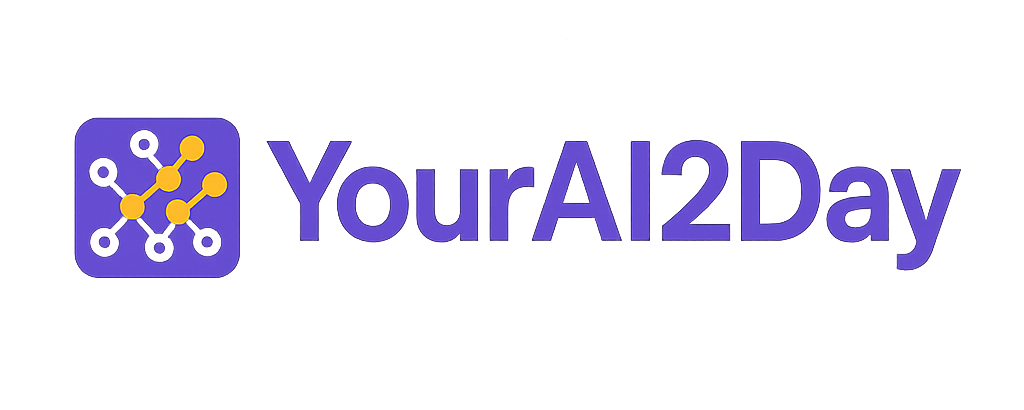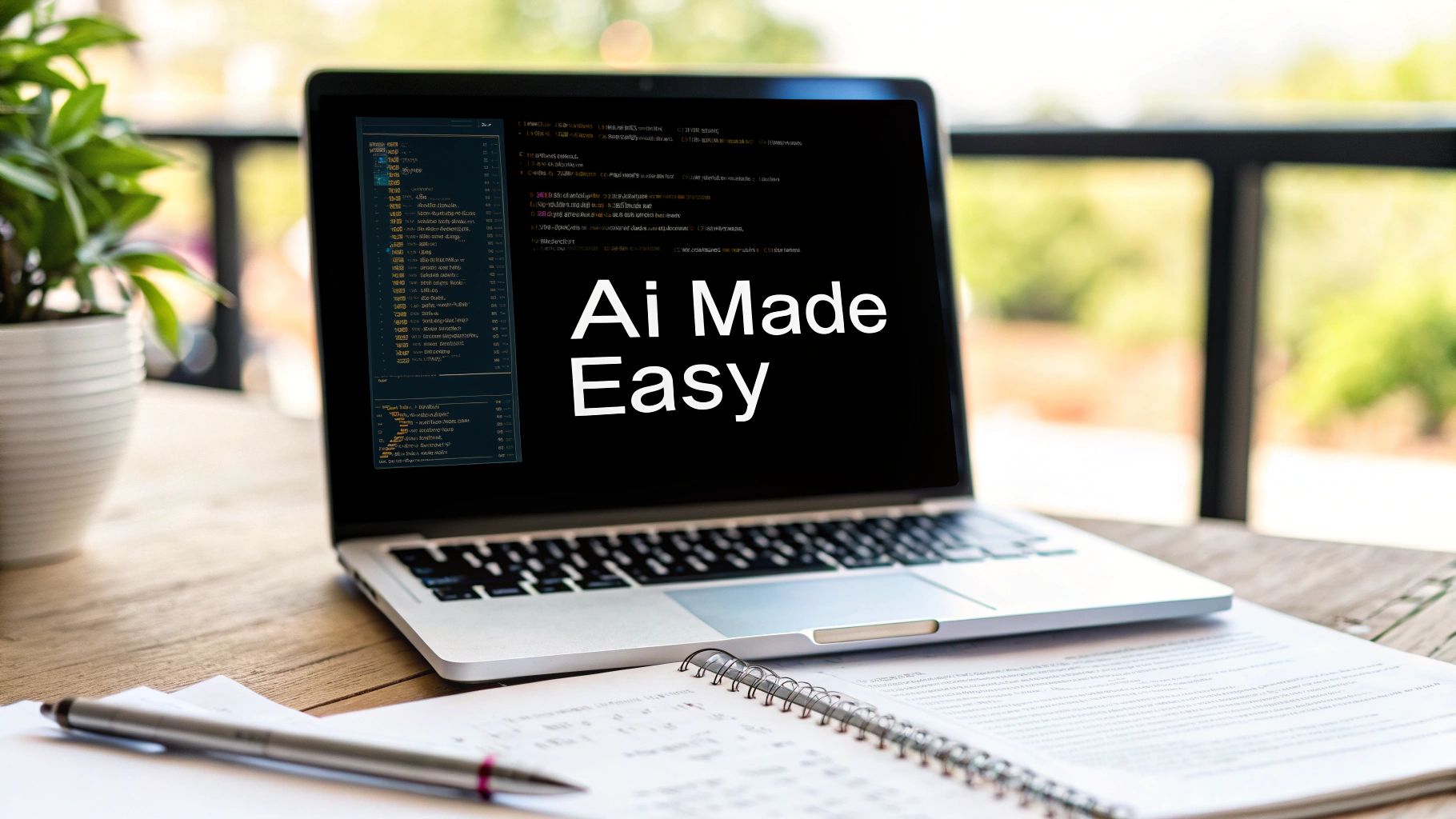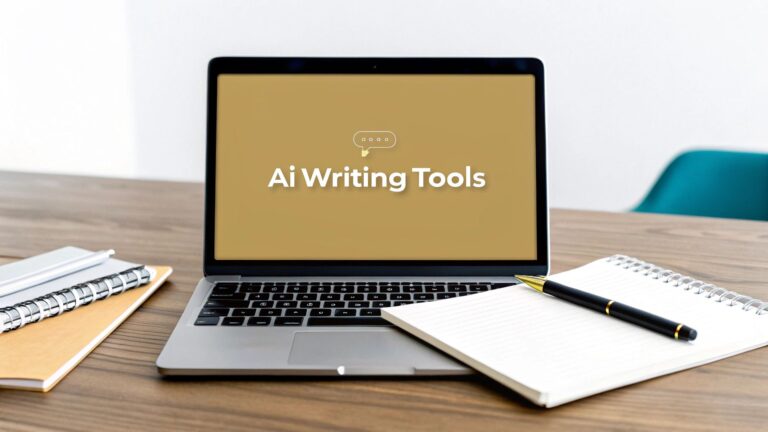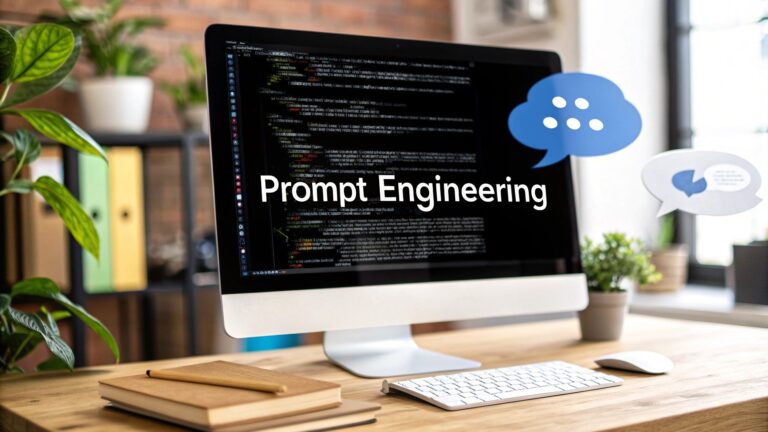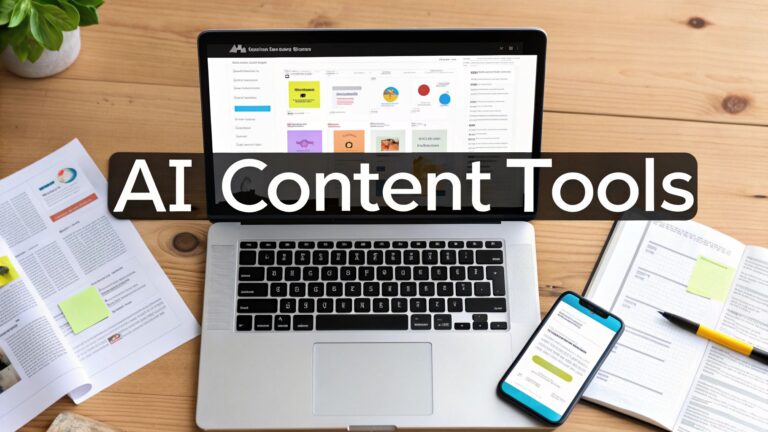How to Learn AI Without Getting Overwhelmed
So, you want to learn AI? It's way more achievable than you might think. Forget those crazy-complex roadmaps for a second. The secret sauce is starting with a solid foundation in Python and the core math concepts, then immediately jumping into hands-on projects. This practical approach gets you building real-world skills from day one, skipping all the unnecessary theory that trips so many people up.
Starting Your AI Journey the Right Way
Feeling the pull to learn AI but getting lost in those endless, complicated guides? You're in the right place. Hey, I'm an expert copywriter and I've seen countless people get stuck. The key isn't to master every single algorithm right away. It's about building a strong, practical foundation you can actually grow with. This guide is designed to give you a realistic path, zeroing in on the skills that truly matter.
We'll cut through the dense jargon and get straight to what you need: the essential math and coding, the best learning resources, and hands-on projects that build genuine confidence. Think of this as your personal mentor, here to guide you from just being curious to being genuinely capable.
Why Learning AI Matters Now
The demand for AI skills isn't just some passing trend; it's a massive economic shift. The global artificial intelligence market is on track to explode from $391 billion in 2025 to an incredible $1.81 trillion by 2030. This kind of growth is creating opportunities much faster than companies can find people to fill them.
With an estimated 97 million people already working in AI-related roles, there's never been a better moment to dive in. For a deeper look, you can discover more about these AI market statistics and trends to see the full picture.
Expert Take: "Forget trying to master theoretical math first," says a senior AI architect I know. "Learn the basics, then let your first project show you what you really need to know next. It's the difference between studying and actually doing."
This project-first mindset keeps you motivated and ensures you're always moving forward. It’s about letting the problem guide your learning.
Your Path to AI Capability
Our goal here is to map out the essentials so you can start with clarity and keep your momentum going. We’ll break down the most critical pieces for your success:
- Essential Foundations: We'll focus only on the specific math and Python skills you'll actually use every day. No fluff.
- Structured Learning: I've curated learning paths and resources that cut straight through the noise.
- Practical Application: It’s all about hands-on projects that prove your skills to yourself and, eventually, to employers.
By starting with a clear plan, you can sidestep the common pitfalls that discourage so many beginners. For a quick look at what this journey feels like, you might want to check out this introductory post about entering the world of AI.
To make this even clearer, here's a quick checklist to summarize the core components of your AI learning plan.
Your AI Learning Quick Start Checklist
This table breaks down the essential pillars of your learning journey, explaining why each one is non-negotiable and giving you a clear starting point for each.
| Component | Why It Matters | Recommended Starting Point |
|---|---|---|
| Foundational Math | Provides the logic behind AI models. You can't tune what you don't understand. | Focus on Linear Algebra, Calculus, and Probability essentials. |
| Python Programming | The go-to language for AI/ML with powerful libraries like NumPy and TensorFlow. | Master data structures, functions, and object-oriented principles. |
| Hands-On Projects | This is where learning sticks. It transforms theoretical knowledge into real skill. | Start with a simple data analysis project on a dataset from Kaggle. |
| Community Engagement | You'll learn faster by surrounding yourself with others who are on the same path. | Join a relevant Discord server or follow AI practitioners on X. |
Think of these four components as the legs of a table—if one is missing, the whole thing becomes wobbly. Building a solid foundation across all of them is your best bet for long-term success.
2. Build Your Foundational Toolkit
Jumping straight into AI without the right background is like trying to build a house without a hammer and nails. Before you can start architecting complex models, you have to get your core toolkit in order. The good news? You don't need a Ph.D. in mathematics or a decade of coding experience to get started.
The trick is to focus on what's practical. I’ve seen so many beginners get completely derailed trying to master years of theoretical math. That’s not an effective way to learn AI. You just need a solid grasp of the concepts that directly apply to machine learning, which keeps you from getting bogged down and helps you build real momentum.
The 'Just Enough' Math You'll Actually Use
Let's bust a common myth right now: you do not need a degree in pure mathematics. Instead, aim for an intuitive understanding of three key areas. Think of them less as academic subjects and more as practical lenses for understanding data.
- Linear Algebra: This is truly the language of data. You'll be working with concepts like vectors (think a single row of user data) and matrices (the entire spreadsheet of users) all the time to represent datasets and perform calculations efficiently.
- Calculus: Don't panic. You won't be solving complex derivatives by hand. You just need a high-level understanding of how derivatives work to see how models "learn" by incrementally tweaking their internal parameters—a process called gradient descent.
- Probability & Statistics: This is the absolute bedrock of machine learning. Core ideas like mean, variance, and different probability distributions are fundamental for making sense of your data and, just as importantly, for evaluating how well your models are performing.
A senior data scientist I know once told me, "Forget trying to master theoretical math first. Learn the basics, then let your first project show you what you really need to know next."
This advice is golden. It reframes learning from a daunting academic chore into an exciting, project-driven discovery. Your projects become your guide, naturally revealing which new math concepts you need to pick up to solve the next problem.
Getting Hands-On with Python
When it comes to programming languages for AI, Python is the undisputed champion. Its clean, readable syntax and massive community make it incredibly approachable for newcomers. But it’s not just the language itself—it’s the powerful ecosystem of libraries that do most of the heavy lifting for you.
Here's a look at the official Python homepage, which is the starting point for millions of developers.
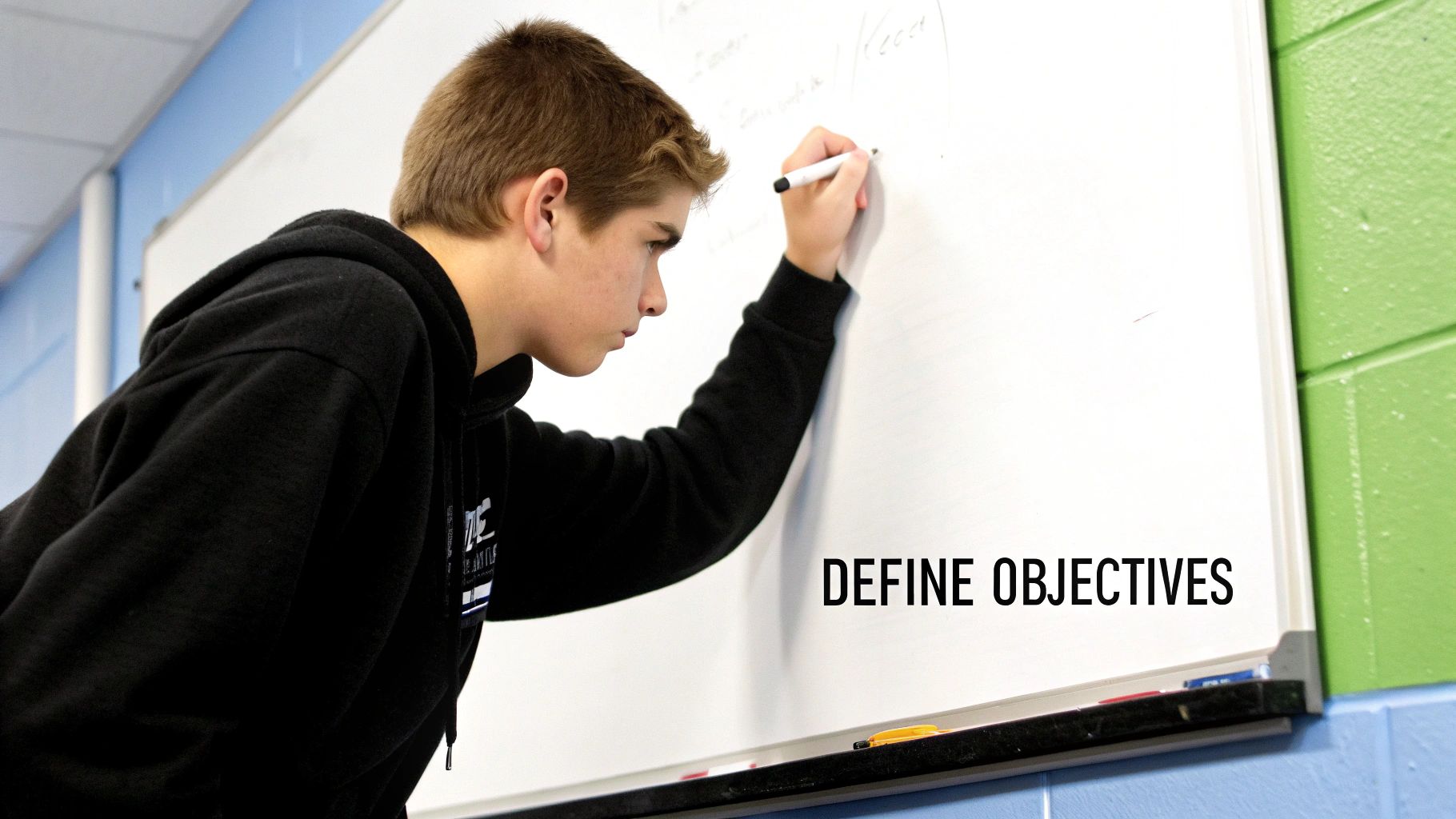
This site is your central hub for everything from downloads to fantastic documentation. It’s an indispensable resource you'll come back to again and again.
To get going, you'll want to get comfortable with a few key libraries that form the backbone of nearly every AI project you'll ever touch:
- NumPy: This is the fundamental package for scientific computing in Python. You'll use it constantly for fast mathematical operations on large arrays and matrices.
- Pandas: If NumPy is for numbers, Pandas is for data tables. It makes the tedious work of cleaning, transforming, and analyzing structured data—like a CSV of customer info—incredibly simple.
- Matplotlib: A good visualization is worth a thousand data points. This library is your go-to for creating charts and graphs to explore your data, spot patterns, and share your findings with others.
By focusing on these practical tools—just enough math and the essential Python libraries—you're building a solid foundation that will support you throughout your entire AI journey. It makes tackling advanced topics later feel less like a huge leap and more like the next logical step.
Finding a Learning Path That Works for You
Once you've got a grip on the essential tools, the million-dollar question becomes: where do you actually learn this stuff? The internet feels like a firehose of information, with every course and tutorial promising to turn you into an AI wizard overnight. The real secret isn't finding the most popular course, but finding a structured path that clicks with your personal goals and how you learn best.
You've got a few different roads you can take. Massive Open Online Courses (MOOCs) on platforms like Coursera and edX are fantastic for flexibility, offering university-caliber instruction without the campus commute. On the flip side, specialized bootcamps offer an intense, fast-paced dive with great career support, but they definitely come with a much steeper price tag.
Aligning Your Path with Your Goals
Before you sign up for anything, you need to be honest about your "why." Are you gunning for a full-time Machine Learning Engineer job? Or are you trying to bring AI skills into your current role in, say, marketing or finance? Your answer completely changes which path makes the most sense.
- Want a high-level overview? If you're in a non-technical role and just need to understand what AI is capable of, a course like Andrew Ng’s "AI for Everyone" is a perfect fit. It's all about strategy and real-world applications—no coding required.
- Ready for a technical deep dive? If you're eager to get your hands dirty with Python and build real models, a more demanding program like the "Machine Learning Specialization," also from Andrew Ng, will give you the practical, hands-on skills you need.
This infographic breaks down the most common learning resources by cost, time commitment, and how interactive they are.
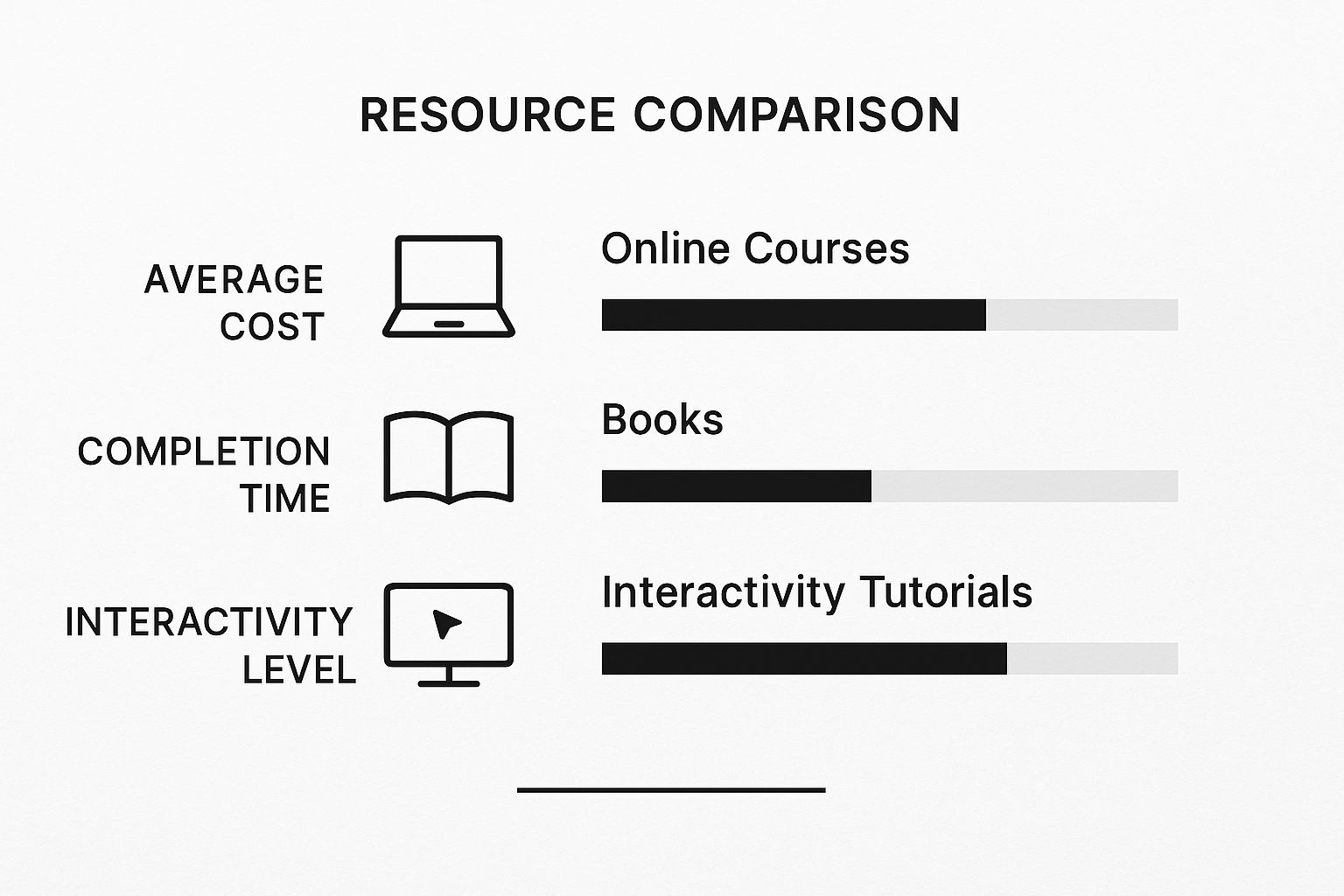
As you can see, there’s a clear trade-off. Online courses strike a nice balance between cost and interactivity, while books are the cheapest way in but offer the least hands-on experience.
The boom in educational technology shows just how many options are out there. The global AI in education market was valued at $7.57 billion in 2025, which is a massive 46% jump from the year before. And with 86% of educational organizations now using generative AI, learning platforms are getting smarter and more personalized all the time. You can get more details on how AI is shaping education statistics and what that means for people trying to learn.
Comparing Top AI Learning Platforms
To help you decide where to invest your time and money, I've put together a quick comparison of some of the most popular platforms out there. Each one has its own strengths, so think about what you value most in a learning experience.
| Platform | Best For | Typical Cost | Key Feature |
|---|---|---|---|
| Coursera | University-backed courses and specializations | $49-$79/month subscription | Access to content from top universities like Stanford and Michigan. |
| edX | In-depth "MicroMasters" and professional certificates | Free to audit; certificates vary | Backed by MIT and Harvard, offering rigorous, academic-level programs. |
| Udacity | Career-focused "Nanodegrees" with project reviews | $249-$399/month | Strong emphasis on project-based learning and mentor support. |
| fast.ai | Practical, code-first deep learning education | Free | Top-down teaching approach that gets you building models immediately. |
Ultimately, there's no single "best" platform. Coursera is great for academic rigor on a budget, while Udacity is a solid choice if you want hands-on projects and career coaching. Take a look at their free introductory materials to see which style feels right for you.
What Recruiters Really Want to See
Finishing a course is great, but it's only one piece of the puzzle. What really catches a hiring manager’s eye is seeing how you've applied what you learned. It’s less about the certificate on your LinkedIn profile and more about what you can actually do.
Expert Take: "A certificate from a top platform is nice," a tech recruiter told me recently, "but a GitHub portfolio with two or three well-documented, original projects is what gets you an interview. It shows initiative and proves you can solve real problems, which is infinitely more valuable than just passing a quiz."
This gets to the heart of it: your learning path has to be project-focused. A good course won't just feed you theory; it will push you to build things. That hands-on experience is what becomes the proof of your skills.
If you're interested in making your projects look as good as they perform, our guide on Google's Material 3 expressive redesigns might offer some useful design insights. At the end of the day, the best learning path is the one you actually stick with and use to build a real, tangible portfolio of your work.
Putting Your Knowledge to Work with Real Projects
Theory is comfortable, but skills are forged in the fire of application. This is where your entire journey into AI truly comes to life. Reading about algorithms is one thing; making one work is another entirely. The goal now is to build a portfolio that tells a compelling story of your growing abilities.
Moving from structured course exercises to open-ended projects can feel intimidating, but it’s the single most important step you'll take. It’s where you prove to yourself—and future employers—that you can translate knowledge into tangible results.
From Beginner Datasets to Custom Solutions
Every AI practitioner has a "first project." A common and excellent starting point is a classic competition on Kaggle, like predicting survivors of the Titanic disaster. This type of project is perfect because the problem is well-defined, the dataset is clean, and countless others have shared their approaches, giving you a valuable safety net.
Take a look at the Kaggle homepage. This platform is your playground for finding interesting problems to solve and datasets to explore, no matter your skill level.
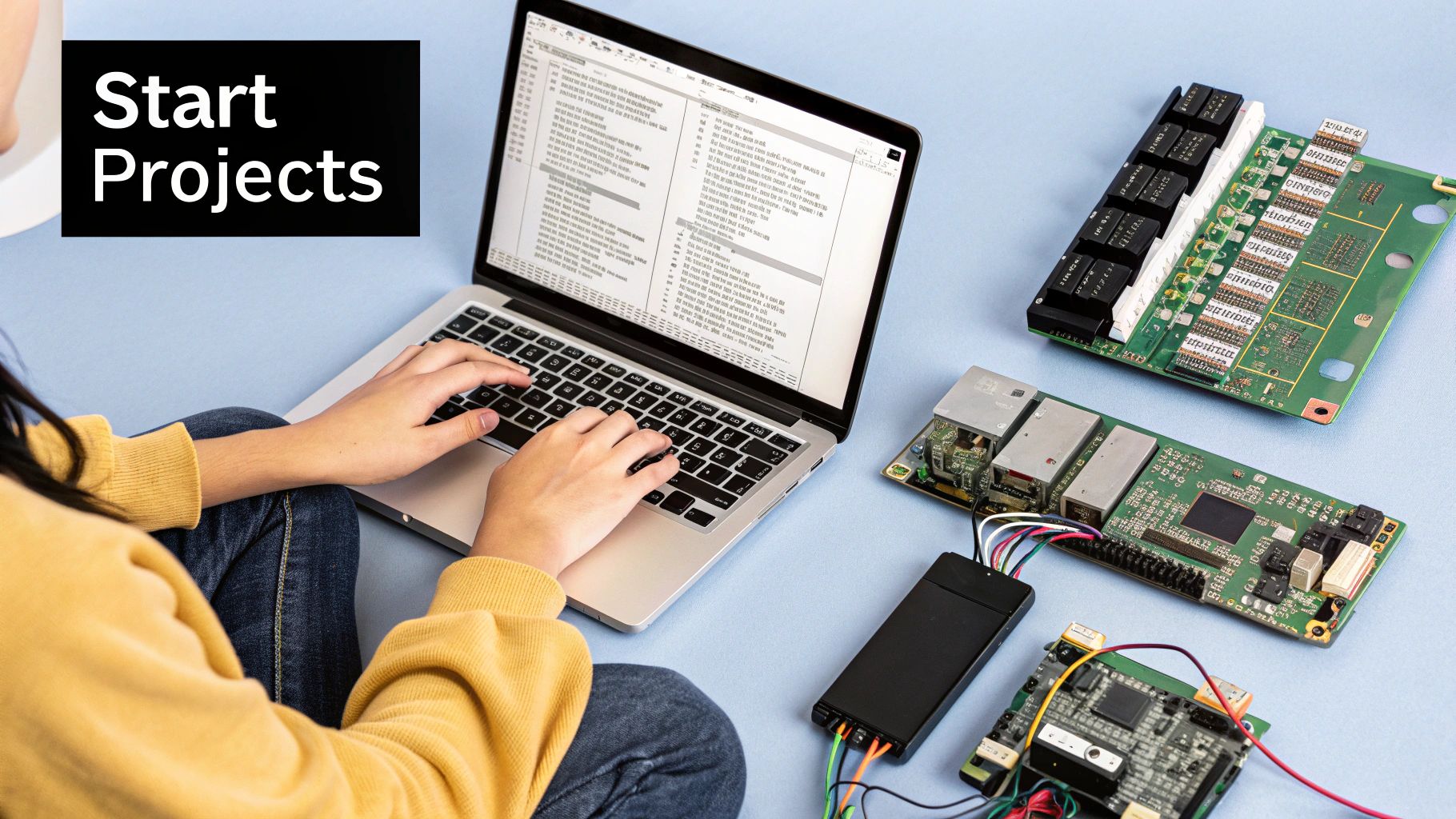
After you build confidence with a guided project like that, it's time to branch out and increase the challenge.
- Build a movie recommendation engine. Using a dataset like MovieLens, you can create a system that suggests movies based on user ratings. This is a fantastic way to learn about collaborative filtering. For example, your code would find users similar to you and recommend movies they loved but you haven't seen yet.
- Create an image classifier. Grab a dataset of cat and dog images and build a simple neural network with TensorFlow or PyTorch to tell them apart. It's a classic introduction to computer vision for a reason.
- Analyze text sentiment. Dig into a dataset of customer reviews and classify them as positive, negative, or neutral. This project throws you right into the fundamentals of Natural Language Processing (NLP).
These projects force you to confront the messy reality of data science: cleaning unruly data, choosing the right model, and trying to figure out why your accuracy is stubbornly stuck at 70%.
Mini-Walkthrough: Predicting Customer Churn
Let's quickly walk through the lifecycle of a common business project: predicting which customers are likely to cancel a subscription.
- Data Exploration and Cleaning: First, you'd load your customer data using Pandas. You would immediately look for missing values—like a customer without a tenure value—and decide how to handle them. Do you fill them with the average tenure or drop the record entirely?
- Feature Engineering: This is where the creativity kicks in. You might combine "monthly charges" and "tenure" to create a new feature called "total lifetime value." This single, engineered feature could be far more predictive than the two originals.
- Model Selection and Training: You'd probably start with a simple, interpretable model like Logistic Regression. Using Scikit-learn, you'd split your data into training and testing sets, then fit the model to the training data.
- Evaluation: Finally, you'd use your trained model to make predictions on the test set you held back. You'd then measure its performance with metrics like accuracy, precision, and recall to see how well it actually identifies customers at risk of churning.
Expert Take: An AI engineer I spoke with shared this gem: "My first job interview was 90% about one project in my GitHub repo. We barely talked about my coursework. They wanted to see my thought process, the mistakes I made, and how I solved a real, messy problem from start to finish."
This insight is critical. Your portfolio isn't just a gallery of successes; it's a documented history of your problem-solving skills. Make sure to document everything on GitHub with clean code and a detailed README file explaining your process.
The connection between project-based learning and career readiness is becoming undeniable. The global education market, estimated at nearly $10 trillion, is shifting toward models that blend AI education with practical industry experience. In fact, EdTech funding for AI and workforce training accounted for 36% of total educational investment in 2024, highlighting this focus on connecting skills directly to jobs. You can learn more about how AI is shaping workforce pathways and this massive move toward work-integrated learning.
Connecting With the AI Community

Trying to learn AI all by yourself is a recipe for frustration. The field moves at a blistering pace, and honestly, the best resource you have is the collective brainpower of the community. Getting involved with other people isn't a distraction—it's one of the best ways to speed up your learning and keep from burning out.
Think of it like this: your courses teach you the theory, but the community shows you how the game is actually played. It’s where you’ll stumble upon new tools, get help debugging that one infuriating error, and really get a sense of what's happening on the front lines.
Find Your Digital Water Cooler
First things first, you need to find out where the conversations are happening. You don't have to be everywhere at once, but picking a few key spots to hang out can make all the difference. These are the places you can lurk, learn, and eventually, start chipping in.
- Reddit: Subreddits like r/MachineLearning are gold mines for deep discussions on new research papers and what's next in the industry. For questions and more beginner-focused chats, r/learnmachinelearning is a much better starting point.
- Kaggle: It’s so much more than just competitions. Kaggle has incredibly active forums for every single dataset and challenge. You can literally watch how experts tackle problems, find people to team up with, and get direct feedback on your code.
- X (formerly Twitter) & LinkedIn: Following top researchers and engineers gives you a real-time feed of the latest breakthroughs. Following people like Yann LeCun or Fei-Fei Li offers insights you simply won't find in a textbook.
Expert Take: "AI gives you answers, but the knowledge you gain is shallow," a senior developer explained. "Reading discussions by experienced developers about your topic is the best way to learn. You come out understanding not just what worked, but why it worked."
This really gets to the heart of it. Just reading a solution isn't enough. The real magic happens when you see how other people think and solve problems out in the open.
Shift From Observer to Participant
Once you've gotten the lay of the land, it's time to jump in. I know, it can feel a little intimidating at first, but this is where you'll learn the most. It’s not just about getting your own questions answered; it's about learning how to ask good questions and give back to the community.
Here are a few practical ways to get started:
- Ask Smart Questions: When you get stuck, frame your question well. Don't just post, "My code is broken." Instead, try something like, "I'm hitting a
ValueErrorwhen I reshape my NumPy array for my CNN input layer. Here’s my code snippet and the full error message." It shows you’ve put in the effort and makes it ten times easier for someone to help you. - Contribute to Open Source: Head over to GitHub and look for a small, beginner-friendly issue on a project you find interesting. It could be something as simple as fixing a typo in the documentation. This is a great way to get comfortable with the workflow and connect with the project's maintainers.
- Join Virtual Meetups: Sites like Meetup.com are filled with AI and data science groups. Popping into a virtual talk is a super low-pressure way to network and learn about niche topics you'd never find otherwise.
Building these connections is a long-term play for your career. When you engage with the community, you're not just finding answers—you're building a network that can lead to collaborations, mentors, and even your next job. If you're curious about the people and mission behind our own community, you can learn more by reading about https://yourai2day.com/about/ and our vision for AI education.
Frequently Asked Questions About Learning AI
Jumping into a field as deep as AI always kicks up a few questions. I see the same ones pop up all the time from people just getting started, so let's clear the air on some of the biggest ones. Getting these sorted out early will help you focus on what really matters.
How Much Math Do I Really Need for AI?
Let's get this one out of the way first: you don't need to be a math genius. The goal isn't to be a human calculator, but to build a strong intuition for why certain models behave the way they do.
You'll want to get comfortable with a few key areas:
- Linear Algebra: This is the language of data. You have to understand things like vectors and matrices; they're everywhere in AI.
- Calculus: Grasping the concept of derivatives is what helps you understand how a model actually "learns" and adjusts itself during training.
- Probability & Statistics: This is non-negotiable. It's the foundation for making sense of data, understanding uncertainty, and knowing if your model is actually any good.
Modern AI libraries do all the heavy lifting for you, but that core understanding is what separates a good practitioner from someone who's just plugging in code.
What Is the Best Programming Language for AI?
This one's easy: Python. It's the undisputed king of AI and machine learning for a reason. Its syntax is clean and readable, the community support is massive, and most importantly, the ecosystem of libraries is unmatched.
Sure, other languages like R have their niche, especially in academia and pure statistics. But if you're aiming for a job in the industry, Python is the way to go. It’s the home of the essential toolkits—like TensorFlow, PyTorch, and Scikit-learn—that virtually every company uses.
Expert Take: A certificate is nice, but a portfolio with 2-3 impressive projects that solve real problems is what will catch a hiring manager's eye.
Honestly, this is the most important piece of advice I can give. Focus on building things that prove you can do the job.
How Long Does It Take to Get a Job in AI?
This really depends on your starting point and how much time you can put in. There's no magic number.
That said, a dedicated person starting from a solid technical background can often become job-ready in about 6 to 12 months. The key is to shift your mindset from "course completion" to "project building" as quickly as possible. For example, instead of just finishing a course on NLP, immediately find a dataset of tweets and build a sentiment analyzer. The finish line isn't a certificate; it's a portfolio that shows you can apply your knowledge to solve tangible problems.
Do I Need a PhD to Work in AI?
For the vast majority of AI jobs out there, the answer is a firm no.
A PhD is still standard for highly specialized research roles—think developing entirely new network architectures at Google DeepMind. But for the most common roles like AI Engineer or Machine Learning Engineer, companies are looking for builders. They want people with practical, hands-on experience who can implement and deploy models that bring value. A strong portfolio almost always beats a fancy degree.
Ready to turn your curiosity into a real-world skill set? At YourAI2Day, we keep you updated with the latest news, tools, and insights to help you navigate your journey. Stay ahead of the curve and discover everything you need to know about the world of artificial intelligence.
Article created using Outrank
